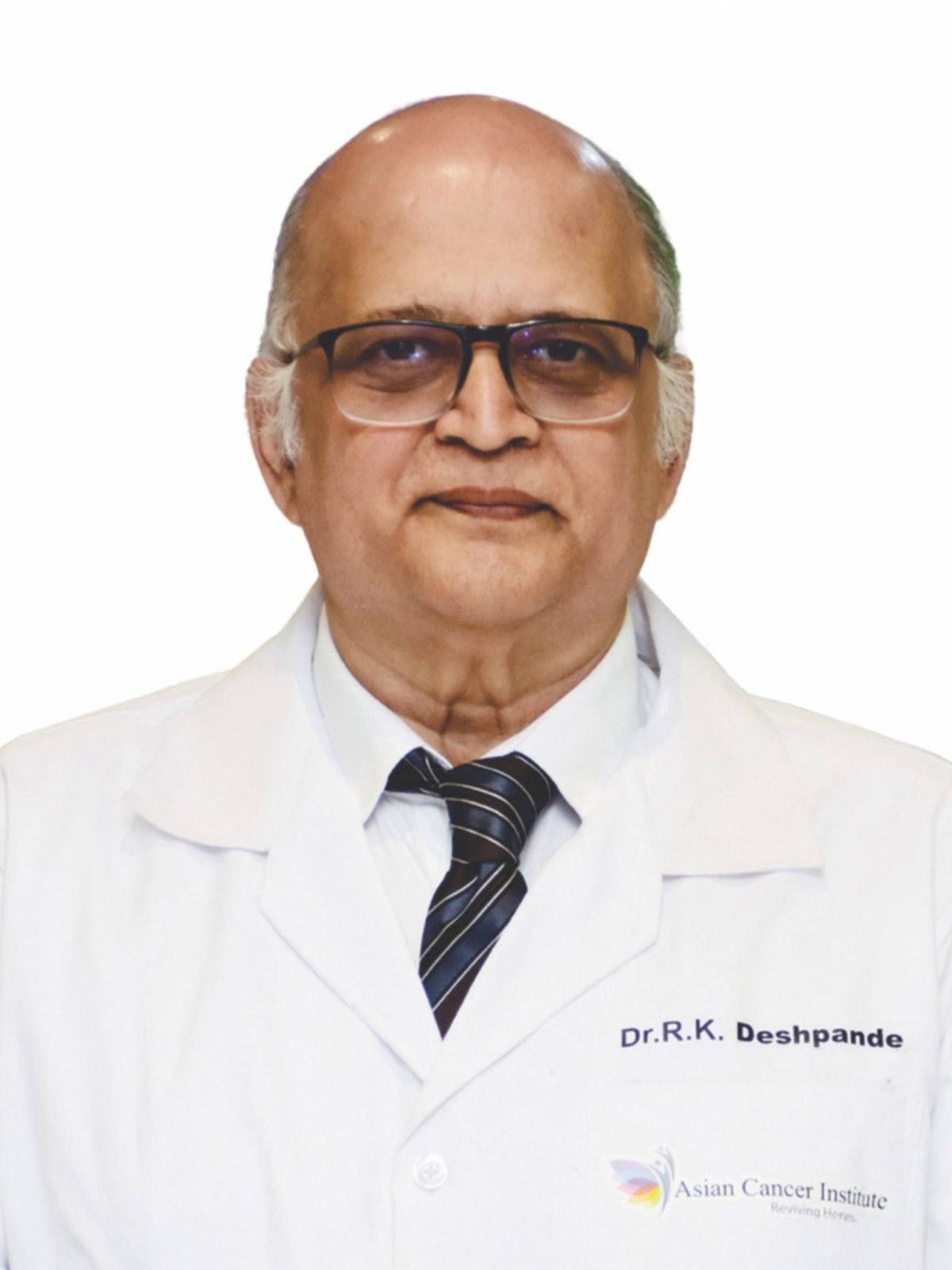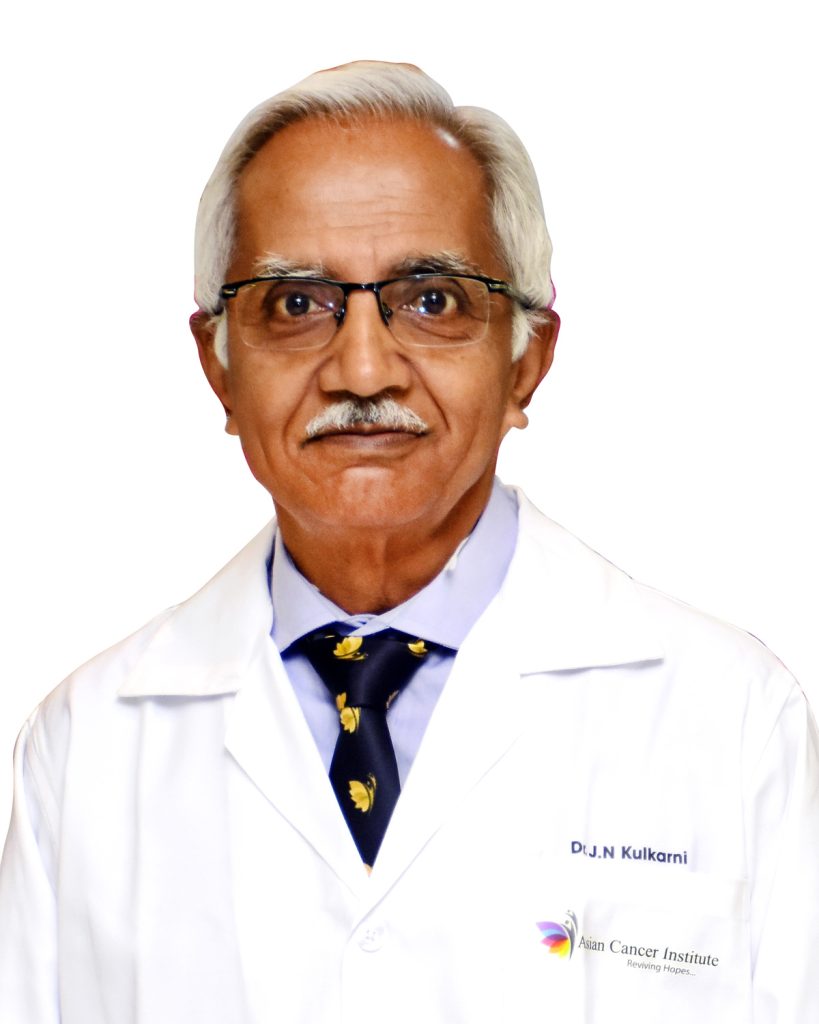Surgical oncology is a specialized practice of cancer surgery that focuses on the removal of tumors, as well as nearby tissue and organs to diagnose and treat cancer. It requires surgeons who are skilled in both the delicate technique for tumor removal as well as in-depth knowledge of the different types of cancers.
The team works together to develop customized treatment plans based on each patient’s individual situation
Cancer Surgery / Surgical Oncology
Cancer surgeons at ACI Cumballa Hill Hospital use surgical methods to diagnose, treat and manage cancer-related symptoms. Stalwarts from the field of cancer surgery are associated with ACI Cumballa Hill Hospital. These renowned onco-surgeons have led the country in the field of cancer surgery and bring you treatments that are path-breaking and humane.
A biopsy or diagnostic surgery is performed to diagnose cancer. In the surgery, a sample of the tissue is taken from the body for a closer look
What Kind Of Cancer Surgeries Are Done?
Biopsy
A biopsy or diagnostic surgery is performed to diagnose cancer. In the surgery, a sample of the tissue is taken from the body for a closer look
Curative Surgery
Once a cancer has been identified, the medical team may advise removal of the tumor or a portion of the cancerous growth
Staging Surgery
A surgery is performed to identify the exact location of the cancer, how much it has spread in the body and whether it is affecting the functioning of the other organs. It helps determine the stage of the cancer and the necessary treatment
Preventive surgery
Cancer surgeons can recommend removal of the body tissue that may become cancerous
Supportive surgery
Surgeries are also done to support the treatment such as installing an infusion port for targeted chemotherapy
Reconstructive surgery
Doctors also perform surgeries to restore the body’s appearance or functioning after cancer treatment
Palliative surgery
Palliative care is to support the patients relieve side effects of the treatment
Types Of Cancer Surgery
Open Surgery
In most open surgeries, the surgeons make a large incision and remove all or part of a tumor and some of the surrounding healthy tissue. It is the traditional form of surgery
Minimally invasive surgical techniques
Laparoscopy, Laser, Cryosurgery are some types of minimally invasive surgical techniques that use little incisions to operate on the patient. ACI Cumballa Hill hospital is fully equipped and has a highly qualified team to perform these modern procedures of surgery.
Meet Our Experts

PADMASHRI, DR RAMAKANT DESHPANDE
Awards & Achievements
- Dr. Deshpande is credited with over 50 publications, both books and articles published in national and international journals.
- He has also written chapters in a book, Textbook of Cancer, published by the National Book Trust.
- He was the first person to introduce Thoracoscopic surgery at the Tata Memorial Hospital' Mumbai Game Changers Award by The HR Club on 7 February 2015.
- The Government of India honored him in 2014, with the award of Padma Shri, the fourth highest civilian award, for his contributions to the fields of medicine.
PADMASHRI DR RAMAKANT DESHPANDE
MBBS, MS, FICA, FAIS, DHA
CHAIRMAN
HOD Thoracic Surgery,
Surgical Oncology

DR. SANJAY SHARMA
DR. SANJAY SHARMA
MBBS, MS, FICS, FAIS
Director
HOD Breast Surgery, Thoracic Cancer
Consultant Surgical Oncology

DR. JAGDEESH KULKARNI
- Oncology Surgery
- Uro-Oncologist
- Gynaec-Oncologist
- Robotic Surgery
DR. JAGDEESH KULKARNI
MS, MCh (URO), FNAMS, MNAMS, FCPS, FICS DEPT.
Director – Asian Cancer Institute
Surgical Oncology

DR. DEEPAK M PARIKH
DR. DEEPAK PARIKH
MS, FCIS
Head & Neck Cancer Surgery,
Surgical Oncology.

DR. PRASAD K WAGLE
DR. PRASAD K WAGLE
M.S FIAGES (Surgery),
Consultant Surgical Oncology

DR. VINAYAK JOG
DR. VINAYAK JOG
Consultant Surgical Oncology

DR. PRIYA ESHPUNYANI
Thoracic oncology, Surgery for malignant and infective diseases of lung, mediastinum and Chest wall , malignant and benign condition of esophagus, Surgery for mediastinal tumours, Minimally invasive thoracic Surgery,Uniportal VATS "Multiple national and international publications. Training in Uniportal VATS at Shanghai Pulmonary Hospital"
DR. PRRIYA ESHPUNYANI
FMAS, FAIS, MNAMS,
Consultant Thoracic Surgeon & Oncologist

DR. RAJENDRA KERKAR
- Minimal Access Surgery (MAS): Validation and critical appraisal of MAS in Gynecological Oncology
- Fertility preservation in gynecological cancer
- Management of ovarian and endometrial cancers
- Management of gynecological cancers in adolescents
- Improving treatment outcomes in Gynecological Oncology
- Postgraduate and post-doc training in Gynecological Oncology
- Quality management in Gynecological Oncology
- First MCI-accredited Teacher for the MCh in Gynecological Oncology
- Cancer Survivors award (awarded by the V-Care Foundation and the Cancer Patients Aid Association-CPAA) in 2010 and 2011 respectively
DR. RAJENDRA KERKAR

DR. SHRAVAN SHETTY
DR. SHRAVAN SHETTY
MCh (Surgical Oncology)
Consultant Surgical Oncology

DR. SANJAY SINGH
DR. SAGAR SHARMA
MS
Consultant Surgical Oncology

DR. VINAY DESHMANE
DR. VINAY DESHMANE

DR. GAYATRI TAHILIANI
DR. GAYATRI TAHILIANI
MS, DNB
Consultant Surgical Oncology
When you are ready to make the appointment, we at Asian Cancer Institute and ACI Super Speciality Hospitals, help you chart the Patient process and journey from there on.
Getting to know your Doctors and choosing the right speciality and cure, in the correct line of process and decisions, is important. We are here to guide and chart the way with precision on every step you are to embark on.
